#F40 GT
Explore tagged Tumblr posts
Photo
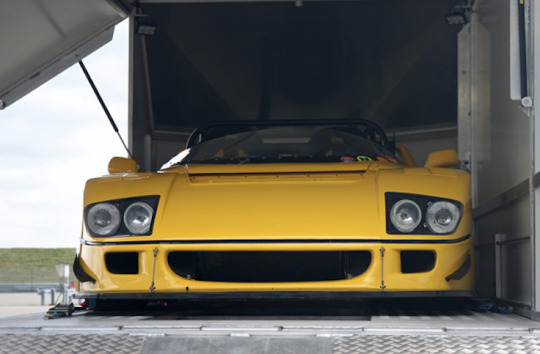
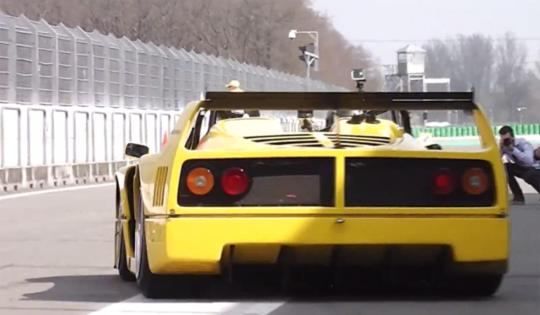
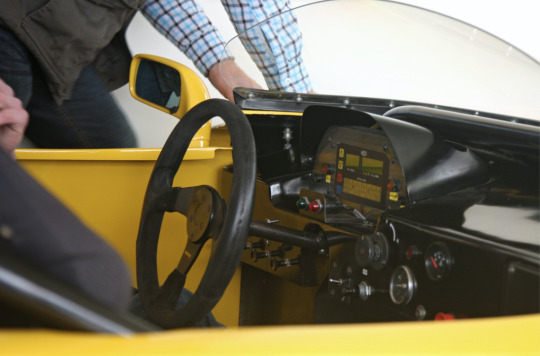

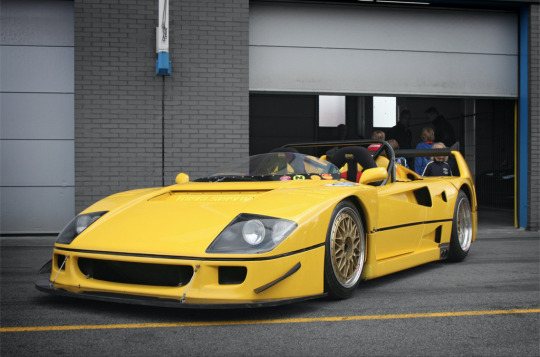

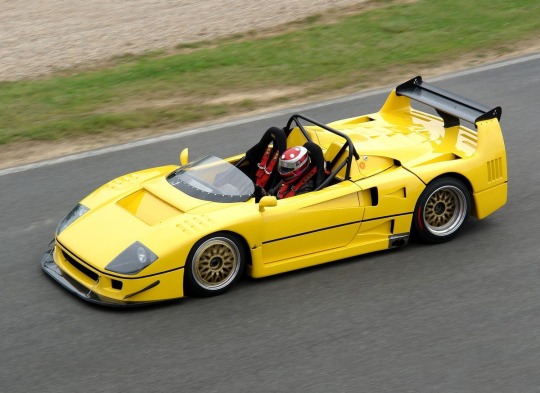
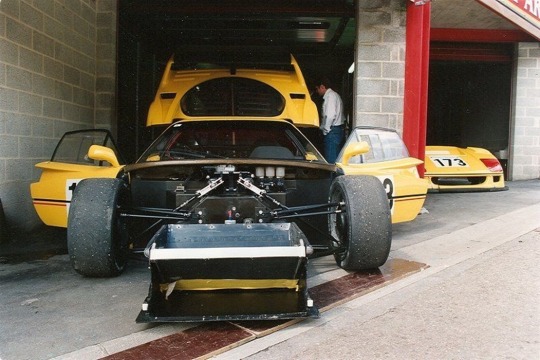
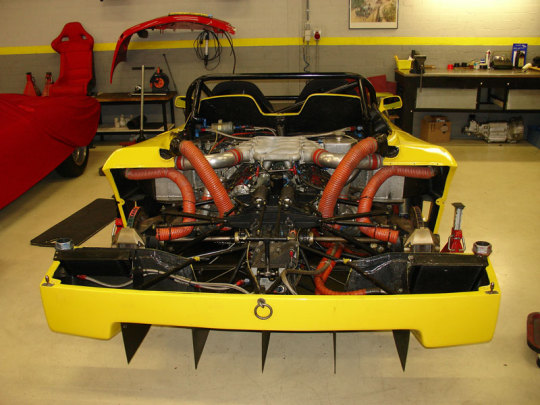
Ferrari F40 LM Barchetta (the F40 that Ferrari Says Doesn’t Exist).
There’s an F40 that isn’t regarded as a Ferrari by Ferrari themselves! Its name: LM Barchetta.
The Ferrai F40 was the last car developed under the supervision of Il Commendatore Enzo Ferrari, before he passed away. It was a tough, barely road-legal race car with a 2.9-litre twin-turbo V8, producing 478bhp (and said to offer much more). Coupled with a composite central structure, tubular space frames, and lightweight composite bodywork, it propelled the car to 201 mph (323 kph). The F40's biggest claim to fame was being the first production car to break the 200 mph barrier. The car was stripped of any unnecessary luxury features: no radio, no floor mats, no air conditioning, even the door was opened by pulling on an exposed wire in the door instead of chunky handle and lever construction and therefore much heavier. They are usually found in automobiles. As a result of this dedication to the car's performance, it looks rather rough around the edges in places.
Enzo Ferrari had always seen his road cars as a way to fund his racing programmes and, of course, the F40 was no exception. Ferrari enlisted the help of Michelotto, a long-term Ferrari race car builder, to make the F40 eligible for the IMSA GT Series in the US. Michelotto extensively rebuilt the F40 and turned them into the F40 LM. The chassis was changed, the suspension was changed, the bodywork was altered and the engine was tuned. The final result was 720bhp, a huge increase in power compared to the road-going F40. Top speed increased from the original 201mph (323kph) to an astonishing 229mph (369kph). To make the car run in other series as well, it was changed to the F40 GT, the F40 GTE and the F40 Competizione, although changes were limited to restrictions in safety and power output only, depending on regulations.
The car was bought by Jean ’Beurlys’ Blaton, a Belgian billionaire with a passion for cars. Not satisfied with a one-of-nineteen car, an ‘ordinary’ car that any fellow billionaire could purchase, Blaton wanted his car to be unique. In theory at least.The roof was cut off, the bodywork was altered again, a competition windshield was installed, the engine’s restrictor was removed, the exhaust was rerouted to exit on the side, a roll-cage was installed and the chassis was upgraded with F1-style pushrod suspension. Oh, and the car was painted yellow, the official historic racing colour for Belgium.
One of the things you might notice when you go over images of all these F40s is that where other cars had “F40” stamped into one of the uprights of the massive rear wing, this one doesn’t. It has no Ferrari badge either, per order of the Italian manufacturer. The brand is so protective of its cars that changes of this magnitude disqualify them as a Ferrari product. So, occasionally, a cease-and-desist order is sent out to remove all prancing horse badges, Ferrari logos and trim from the car(s) in question. And thus the car is scrapped from the company’s archives and “lost”, even though most of its history is known.
#Ferrari F40 LM Barchetta#Enzo Ferrari#Michelotto#F40 Competizione#F40 GT#F40 GTE#Jean ’Beurlys’ Blaton
133 notes
·
View notes
Text

#ferrari#F40#nigel mansell#F1 Driver#English#Uk#Maranello#Formula One#Formula 1#italian#cool car#Super Car#car#sports car#V8#Turbo#UK#Ferrari F40#308#308 GTS#GTS
100 notes
·
View notes
Text
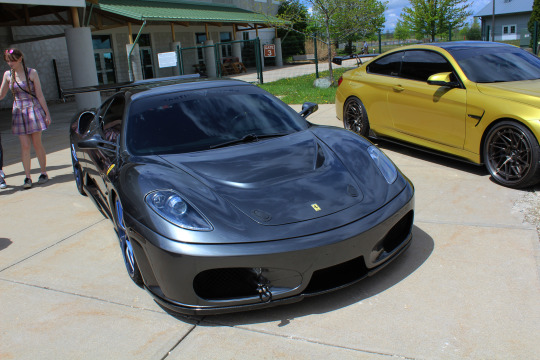
Ferrari F430 at WCEC's Season Opener (2024) in West Bend, WI.
#wcec#stance#stanced#ferrari#f430#f430 spider#f430 scuderia#360 modena#360 spider#458 italia#458 spider#458 speciale#488 gtb#488 spider#488 pista#f8#f8 tributo#f8 spider#enzo#laferrari#f40#f50#f40 lm#f50 gt#sf90#roma#california#california t#296 gtb#296 gts
7 notes
·
View notes
Text











#forza horizon 4#ferrari f40#jaguar xj220#land rover range rover sport svr#toyota mr2 gt#forza#forzaedit#forza horizon#caredit#gamingedit#gameedit#videogameedit#gif#gifs
0 notes
Text
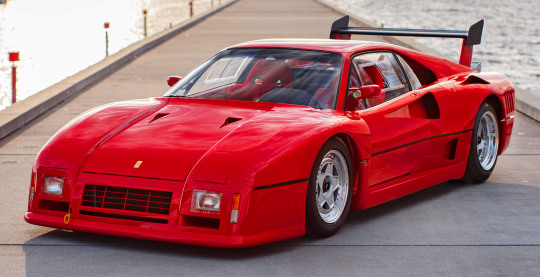
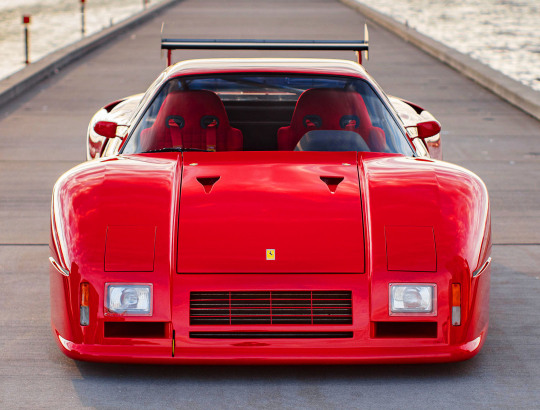
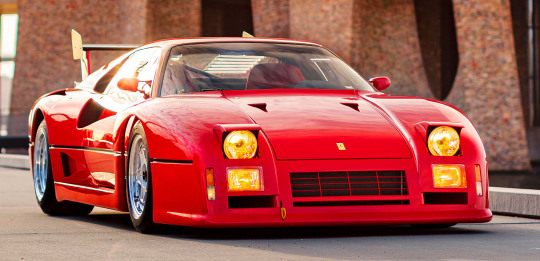
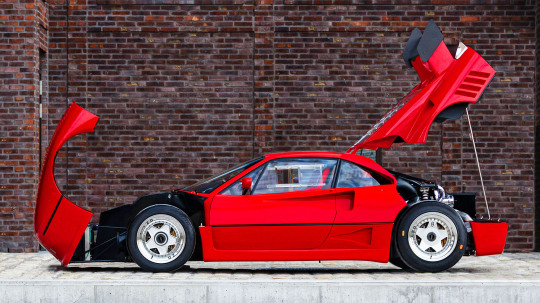
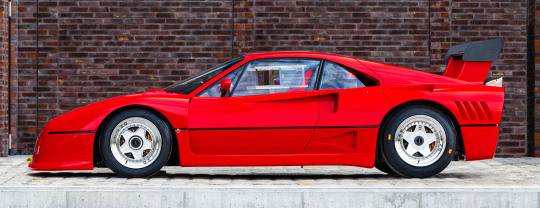

Ferrari GTO Evoluzione, 1988, by Michelotto. Originally designed as a Group B sports car racing version of the 288 GTO, however when those regs were scrapped in 1986 the project was shelved. It had been the last GT racing Ferrari to receive direct input from Enzo and was powered by a 650bhp twin-turbo 2.9-litre V8 with bodywork made from carbon fibre and kevlar. Michelotto was going to build the GTO Evoluzione at a rate of 20 per year but in fact only 5 were made with one Evoluzione used as a prototype for the road-going F40.
#Ferrari#Ferrari GTO Evoluzione#Michelotto#Group B#1988#twin turbo#race car#1980s#Ferrari GTO#V8#mid-engine#coachbuilt
255 notes
·
View notes
Text

El Porsche 911 GT1 es un automóvil de carreras diseñado por el fabricante alemán Porsche para competir en la clase GT1 de deportivos, que también requería una versión de calle para fines de homologación. La versión de calle, producida en edición limitada, se llamó 911 GT1 Straßenversion (versión de calle). Aquí tienes toda la información existente sobre el Porsche 911 GT1:
- El 911 GT1 se presentó en 1996, como respuesta al McLaren F1 y al Ferrari F40, que dominaban la categoría GT1. Sin embargo, el 911 GT1 tenía muy poco en común con el 911 de la época, solo compartiendo los faros delanteros y traseros con el deportivo de producción. Su chasis frontal se basaba en el 911 (993), mientras que su subchasis trasero se derivaba del 962C, al igual que su motor bóxer de 6 cilindros biturbo de 3.2 litros, refrigerado por agua, que generaba unos 600 CV de potencia. El motor se montaba en posición central-trasera longitudinal, en lugar de la posición trasera habitual de los 911. El 911 GT1 debutó en las BPR Global GT Series (el predecesor del campeonato FIA) en las 4 horas de Brands Hatch, donde Hans-Joachim Stuck y Thierry Boutsen ganaron cómodamente. También ganaron en Spa y Ralf Kelleners y Emmanuel Collard triunfaron para el equipo oficial en Zhuhai. El 911 GT1 alcanzó una velocidad máxima de exactamente 330 km/h en la recta de Mulsanne durante los entrenamientos de las 24 Horas de Le Mans de 1996¹².
- En 1997, Porsche presentó una versión evolucionada del 911 GT1, llamada Evo, que tenía un aspecto más aerodinámico y una carrocería más ligera. El motor también se mejoró ligeramente, alcanzando unos 630 CV. El Evo dominó el campeonato FIA GT, ganando seis de las once carreras y logrando el título de constructores y pilotos con Stuck y Boutsen. Sin embargo, en las 24 Horas de Le Mans, el Evo sufrió varios problemas mecánicos y accidentes, y solo uno de los tres coches inscritos logró terminar la carrera, en el segundo puesto detrás del McLaren F1 GTR²³.
- En 1998, Porsche desarrolló una nueva versión del 911 GT1, llamada simplemente '98, que tenía un diseño completamente nuevo y más parecido al 911 (996) que se lanzaría ese mismo año. El motor se modificó para cumplir con las nuevas normas de la FIA, que limitaban la cilindrada a 3 litros y la potencia a unos 550 CV. El '98 también tenía un sistema antibloqueo de frenos (ABS) y un control de tracción (TC). El '98 se enfrentó a una dura competencia por parte del Mercedes-Benz CLK GTR y el Toyota GT-One, pero logró ganar las 24 Horas de Le Mans con Laurent Aïello, Allan McNish y Stéphane Ortelli al volante. Fue la última victoria de Porsche en Le Mans hasta el año 2015²⁴.
- Para poder homologar el 911 GT1 como un GT1, Porsche tuvo que producir un mínimo de 25 unidades para uso en carretera. Estas unidades se denominaron 911 GT1 Straßenversion y se vendieron a un precio de unos 900.000 dólares cada una. El Straßenversion tenía un aspecto similar al Evo de 1997, pero con algunos cambios para adaptarse a las normas legales, como faros elevados, parachoques más grandes, retrovisores exteriores más grandes, intermitentes naranjas y un alerón trasero fijo. El motor se redujo a unos 537 CV para mejorar la fiabilidad y el consumo. El Straßenversion podía acelerar de 0 a 100 km/h en unos 3.7 segundos y alcanzar una velocidad máxima de unos 310 km/h² .
5 notes
·
View notes
Text
The Evolution of Luxury Cars
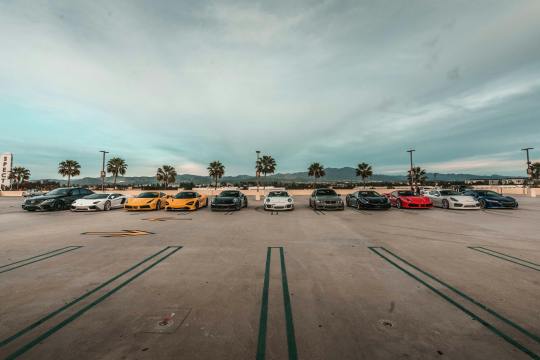
Since the early 20th century, luxury or exotic cars have pushed the boundaries of four-wheeled vehicular design by integrating the latest technologies in each distinctive era.
In the early 1900s, driving an automobile was considered luxurious because cars were costly and rare. Brands like Rolls-Royce, Bentley, and Daimler pioneered car design. They mainly targeted the wealthy elite as their clients. The Rolls-Royce Silver Ghost, introduced in 1907, set new standards for luxury with its quietly smooth operation and extravagant features. This era set the prototype for how a luxury car should look because it embodied exclusivity and craftsmanship.
The 1950s and 1960s marked a golden age for luxury cars while also catapulting supercars onto the automobile scene. After World War II, many experienced economic recovery, which increased the demand for high-end vehicles. Iconic models like the Mercedes-Benz 300SL “Gullwing” and the Jaguar E-Type are examples of luxury cars during this period. These cars combined high performance with sleek styling; they boasted powerful engines and lavish interiors. In addition to the spike in luxury car sales, the supercar was born in the 1960s. In 1966, Lamborghini launched the Miura. Miura featured a mid-engine layout, which redefined the concept of a sports car, ushering other manufacturers to develop supercar models.
Technology revolutionized the automobile landscape in the 1970s and 1980s. Luxury car manufacturers began incorporating cutting-edge technologies like fuel injection, anti-lock braking systems, and electronic stability control. In 1987, Ferrari introduced turbocharging in supercars, as seen in its iconic Ferrari F40, which featured the raw power of 1980s supercars.
Luxury cars and supercars evolved at an accelerated pace during the 1990s. Luxury car manufacturers incorporated advanced safety features, more refined powertrains, and early modern infotainment systems. In 1998, the McLaren F1 set a new record in car performance, earning the title of the fastest car in the world. Its use of carbon fiber and innovative design elements influenced supercar development in later years.
The 2000s brought a new era of technological integration in luxury vehicles. Features like adaptive cruise control, lane-keeping assist, and advanced driver assistance systems became commonplace in high-end cars. Supercars of this era, such as the Bugatti Veyron and Porsche Carrera GT, enhanced car performance through aerospace-grade materials and enhanced aerodynamics.
Recently, the luxury and supercar segments had to catch up with the pace of the automobile industry. They faced new challenges with the rise of electric powertrains and autonomous driving technologies. The introduction of the Tesla model incentivized traditional manufacturers in the luxury car market to accelerate their sustainability efforts due to its high-performance electric vehicles. Today, almost every luxury brand offers hybrid or fully electric models. Similarly, supercars like the Ferrari LaFerrari and the McLaren P1 incorporated hybrid powertrains. Fully electric supercars, like the Rimac Nevera, are now challenging traditional combustion-engined vehicles in terms of performance.
In the future, luxury cars and supercars are set to become more autonomous, connected, and personalized. Further technological advancements such as AI systems, self-driving capabilities, and seamless connectivity will transform these vehicles into intelligent, mobile living spaces. For supercars, the pursuit of speed will continue, but with a greater emphasis on sustainability and efficiency.
0 notes
Video
youtube
Ferrari F40 GT Michelotto - Une légende née de la course
0 notes
Photo

"¡Te sorprenderá! ¡Ferrari con motores de 4 cilindros que cambian las reglas del juego!" - ¿Has oído las noticias? ¡Se rumorea que Ferrari está haciendo una incursión en el territorio del motor de 4 cilindros! #FerrariSwap En primer lugar, déjame decir que siempre he tenido una debilidad por los V8 y V12 icónicos de Ferrari. Son casi como un himno en el mundo del automovilismo. La música que hacen al rugir en la carretera es inconfundible; un destello brillante de ingeniería italiana. Ahora, imagina que de repente, esos elegantes motores rugientes se ven reducidos a un simple murmullo de 4 cilindros. ¿Podemos realmente estar listos para eso? Realmente se siente como un puñetazo en el estómago. Desde el F40 hasta el último SF90 Stradale, los V8 y V12 de Ferrari siempre han sido la esencia de la marca. Han sido fieles a su gloriosa tradición de ingeniería automotriz, siempre evolucionando para ofrecer a sus conductores la máxima experiencia en términos de rendimiento y emoción. Bueno, algunos dirán que la inclusión de un motor de 4 cilindros es el progreso. Que los motores más pequeños son la respuesta a los problemas de emisiones y al cambio climático. Pero, considerando que estamos hablando de un superdeportivo, tener un mero motor de 4 cilindros es como contratar a un chef con estrella Michelin para que prepare un humilde sándwich de jamón y queso. La sustancia, la intriga, la complejidad, simplemente ya no estarían. Recuerdo una vez que abrí el capó de un increíble Ferrari 355 GTS y me encontré con ese impresionante V8 que estaba en el corazón de la bestia. Eso fue algo realmente especial. Esa experiencia, esa emoción, no la obtienes de los motores de 4 cilindros. Por tanto, la selección de Ferrari de un motor de 4 cilindros parece un intento apresurado de seguir las tendencias en lugar de mantener su identidad única. Ahora bien, si Ferrari realmente va a tomar la dirección de los motores de 4 cilindros, entonces más vale que se asegure de mantener su esencia. Si van a tocar la orquesta, más vale que dirijan un concierto digno de una ovación de pie. Porque no podemos olvidar que la emoción, el rendimiento y la pasión siempre han estado en el corazón de los vehículos de Ferrari. Y si eso se pierde, entonces se perderá una gran parte de lo que hace a Ferrari, bueno, Ferrari. Pero, ¿quién sabe? Tal vez Ferrari nos sorprenda a todos y logre producir algo verdaderamente emocionante y digno de su nombre con un motor de 4 cilindros. Pero por ahora, diría que lo dudo. ¿Estás listo para esto? #CarTalk Por último, quiero decir algo realmente controvertido. ¿Listos? Para mí, reemplazar los V8 y V12 por motores de 4 cilindros es como reemplazar la Mona Lisa por un dibujo hecho en Paint. ¡Boom! Allí lo dejo. ¿Qué opinas tú? "Esto no es un adiós, viejos amigos V8 y V12. Esto es simplemente, nos vemos luego, espero".
0 notes
Photo
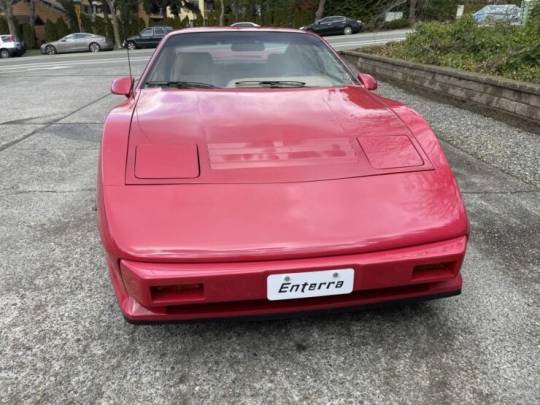
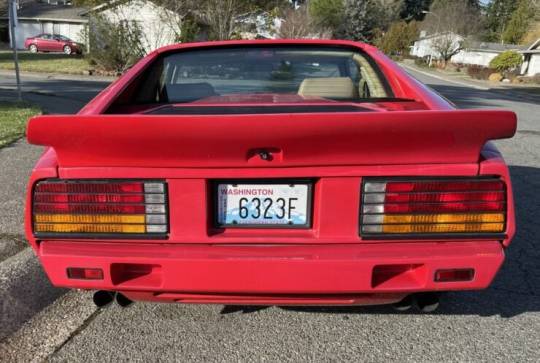


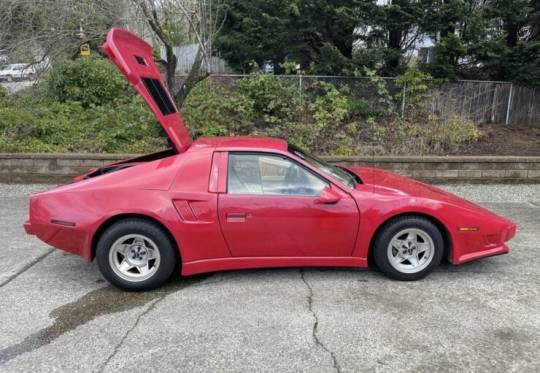
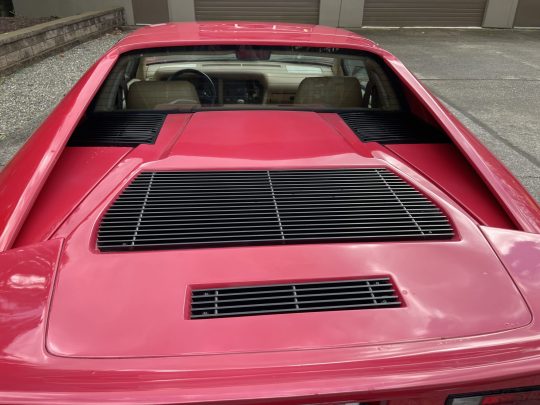
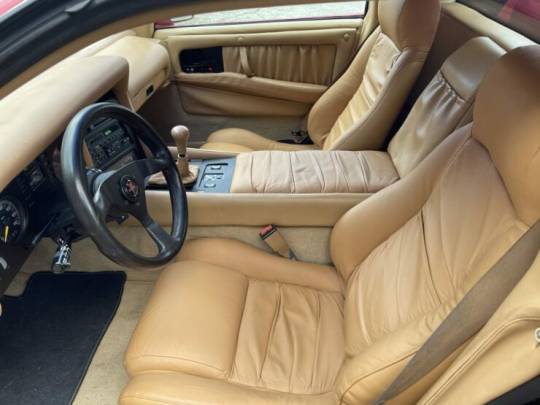

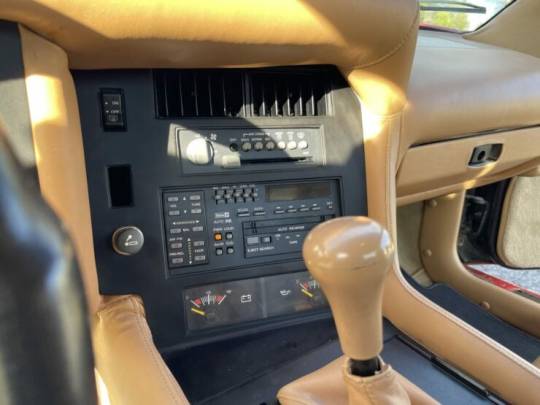

Enterra Vipre
The Enterra Vipre was developed in the mid-1980s by a group of waiters at the Keg Restaurant on Vancouver’s Granville Island. Somehow they managed to secure a grant from the Canadian Scientific Research Council for $10 million CAD, and perhaps not surprisingly it all went wrong shortly after.
Whoever these waiters were they were astonishingly adept salesmen. Not only did they talk their way into that $10 million CAD government grant, but they also talked General Motors into selling their cars in the USA right out of Pontiac dealerships – with a full manufacturer’s warranty no less.
Exactly how a group of waiters came up with the idea of starting their own car company may be lost to history, but we do know that in the early-to-mid 1980s the waitstaff at the Keg Restaurant on Vancouver’s Granville Island hatched a plan to launch their own custom car brand and call it Cymbria.
Rather than building a car from scratch as Bricklin has done a decade earlier before collapsing into bankruptcy the team at Cymbria decided too instead base their car on a preexisting production sports car to save time and money.
The car they chose was arguably the hottest American sports car of the time, the Pontiac Fiero, an affordable mid-engined car with a lightweight fiberglass body. Cymbria developed their own custom bolt-on fiberglass body for the car, then they developed a more luxurious interior, they doubled the sticker price, and put their car on the market.
By the time the initial problems with the body moulds and ill-fitting panels had been rectified it was 1986 and the company had changed its name to Enterra, possibly as a way to leave some space between themselves and the negative press that the earlier 1984 Cymbria prototype had attracted.
The styling of the Enterra Vipre was perhaps a little misleading. It looked like a mid-engined supercar that was doing 200 mph even standing still. In reality it was powered by the standard 2.8 liter Pontiac V6 making just 140 bhp and 170 lb ft of torque.
When the Fiero was still new and exciting back in 1983 and 1984 many kit car and low-volume automakers hailed it as their savior. Its steel spaceframe chassis, mid-engined layout, and easy-to-remove fiberglass outer body panels made it ideally suited to modification. Countless Ferrari replica kit cars were based on the Fiero, there were also Lamborghini kits, and kits replicating other models. Interestingly one of those Ferrari replica designs was the Pontiac Mera – it had a bodykit designed to emulate the Ferrari 308 GTS which was being used in the popular Magnum P.I. TV series in the 1980s. 159 of them were made and sold through Pontiac dealers in the USA before the Ferrari lawyers got involved and shut the operation down. The Canadian answer to this Fiero phenomenon was the Enterra Vipre. Its design was clearly influenced by the Ferraris of the time including the F40, though it was carefully designed so as not to be a replica of any single model – therefore resistant to the famously litigious Ferrari legal representatives in the United States.
The first prototype was built in 1984 as the Cymbria Vipre, however the poor fitment of the fiberglass body panels and overall build quality left a lot to be desired. The moulds had to be completely redone, by the time they were ready it was 1986. The car was relaunched, now as the Enterra Vipre, with a price of over $30,000 USD – the equivalent to $71,277 USD in 2023 and roughly double the cost of a standard V6 Fiero.
Despite the fact that the car was being sold through selected Pontiac dealerships in the USA it was a complete flop. The lack of brandname awareness for Enterra coupled with the high price and the fact that the car had slightly worse performance than the stock V6 Fiero (due to to the larger/heavier body) resulted in dismal sales.
58 notes
·
View notes
Text
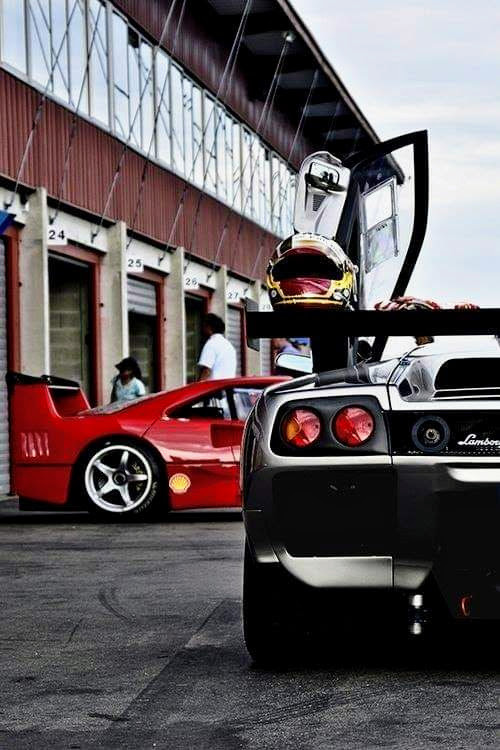
89 notes
·
View notes
Photo

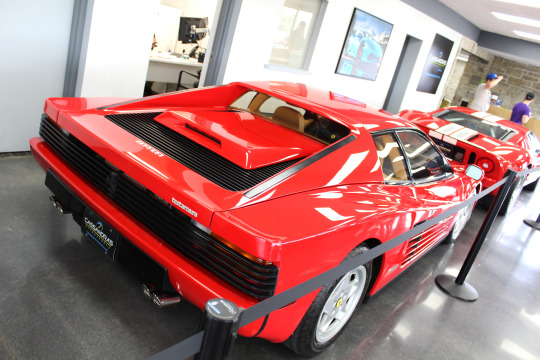
Ferrari Testarossa at Cassandra's Motorsports Open House (2023) in Pewaukee, WI.
#stance#stanced#ferrari#testarossa#512tr#512 bb#512 berlinetta boxer#f40#f50#f40 lm#f50 gt#enzo#laferrari#812 superfast#f12tdf#f12berlinetta#612 scagletti#599 gtb#599 gto#599 gtb fiorano#575m#575m maranello#550 maranello#456m#f8 tributo#f8 spider#488 pista#488 gtb#488 spider#458 italia
30 notes
·
View notes
Text






#forza horizon 5#ferrari f40 competizione#vuhl 05rr#cadillac xts limousine#audi rs e-tron gt#volkswagen andretti rallycross beetle#aston martin vantage#forza#forzaedit#forza horizon#gamingedit#gameedit#videogameedit#caredit#gif#gifs
0 notes
Text
The Need for Speed: A Dive into High-Performance Cars
High-performance cars, often colloquially referred to as Tops Speed have been capturing the hearts of automotive enthusiasts for decades. These machines are not merely modes of transportation; they are masterpieces of engineering designed to push the boundaries of speed, power, and handling. In this article, we'll take a thrilling ride into the world of high-performance cars, exploring what makes them special, their history, and some iconic models that have left an indelible mark on the automotive industry. FordCarNews.com
The Essence of High-Performance Cars
High-performance cars are characterized by their exceptional speed, agility, and precision. These vehicles are meticulously crafted with cutting-edge technology and materials to deliver an unparalleled driving experience. They are designed for those who crave the thrill of acceleration, the roar of a powerful engine, and the sensation of gripping the road at high speeds.
A Brief History of Speed SUV
The pursuit of speed has been a driving force in the automotive world since its inception. Here are some key milestones in the history of high-performance cars:
Early Speedsters: The early 20th century saw the rise of speedsters like the Mercedes-Benz SSK and the Bentley 4½ Litre. These cars combined elegance with performance and laid the foundation for future sports cars.
Muscle Car Era: The 1960s and 1970s ushered in the era of American muscle cars. Iconic models like the Ford Mustang, Chevrolet Camaro, and Dodge Challenger became symbols of raw power and speed.
European Supercars: In the 1980s and beyond, European manufacturers introduced legendary supercars, including the Ferrari F40, Lamborghini Countach, and Porsche 911 Turbo. These cars set new standards for top speeds and aerodynamics.
Japanese Sports Cars: Japanese automakers like Toyota, Nissan, and Honda entered the high-performance arena with cars like the Toyota Supra, Nissan Skyline GT-R, and Honda NSX, challenging the dominance of European and American models.
Modern Supercars: Today, manufacturers like Bugatti, McLaren, and Koenigsegg produce hypercars that shatter speed records and push the limits of what's possible on four wheels. The Bugatti Chiron, for example, boasts a top speed of over 260 mph.
Iconic Tops Speeds
Ferrari LaFerrari: This hybrid hypercar combines a V12 engine with an electric motor to produce a staggering 950 horsepower. It's a symbol of Ferrari's commitment to speed and innovation.
McLaren P1: The P1 is another hybrid hypercar that offers mind-bending speed and performance. It features a 3.8-liter twin-turbocharged V8 engine combined with an electric motor.
Porsche 911 GT3: Known for its precise handling and track-focused performance, the 911 GT3 is a favorite among sports car enthusiasts. It marries speed with agility and has a distinctively iconic design.
Dodge Challenger SRT Demon: This American muscle car is built for straight-line speed. With over 800 horsepower, it's one of the most powerful production cars ever made.
Lamborghini Aventador: Lamborghini's Aventador is a V12-powered supercar that combines striking design with blistering speed. It's a true head-turner on both the road and the track.
Conclusion
High-performance cars represent the pinnacle of automotive engineering and design. They are not just machines; they are a testament to human ingenuity, pushing the limits of what's possible. Whether you're a speed aficionado or simply appreciate the artistry of finely crafted automobiles, the world of high-performance cars offers a thrilling journey into the heart of automotive excellence.
0 notes
Text
McLaren F1 GTR vs Ferrari F40 LM battle on the banking at France’s historic Autodrome de Montlhéry during the 1995 BPR Global GT championship.
McLaren F1 GTR vs Ferrari F40 LM battle on the banking at France’s historic Autodrome de Montlhéry during the 1995 BPR Global GT championship. pic.twitter.com/iEUwbjGXVF — Mark Whitelegge (@Mark_Whitelegge) June 30, 2023
View On WordPress
0 notes